By Cain Smith.
In the last decade, Real Madrid gave the biggest display of European dominance since Udo Lattek’s Bayern Munich in the 1970s.
Los Blancos won the Champions League three years in a row in 2016, 2017 and 2018, also winning the tournament in 2014.
This analysis will look at the tactics Zinedine Zidane implemented, and the overall reasons for Real Madrid’s dominance during this time.
The System
In the consecutive years in which they won their Champions League titles, Real Madrid kept roughly the same system and also had almost exactly the same personnel.
The starting XI in the final in 2017 and 2018 was the same. but with Isco playing centrally in 2018 rather than on the right-wing as he did in 2017.
In 2016, it was almost the same — with Gareth Bale and Pepe starting the final instead of Raphael Varane and Isco.
Zidane’s system was quite simple, but extremely effective.
His prioritised the attacking fullbacks, Marcelo and Dani Carvajal, with midfielder Casemiro often covering for them.
While in transition their shape looked something like 2-4-4, with either fullback operating in the attacking and midfield space.
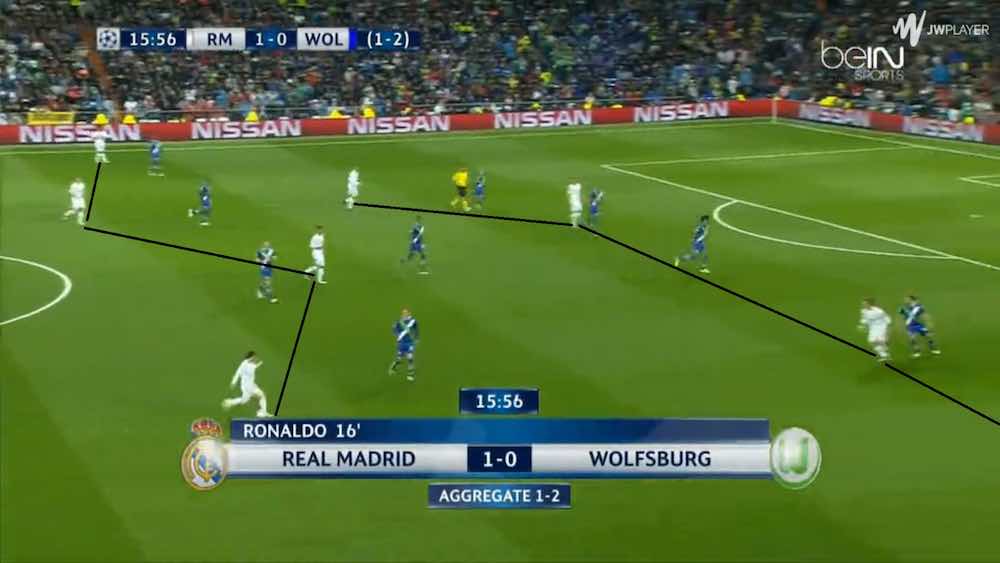
The flanks were Madrid’s primary focus, and crossing was their main threat, with Cristiano Ronaldo and Karim Benzema both strong in the air and around the box.
Madrid’s attacking shape was important to their success. Whichever side the attack would be going down, Madrid usually operated with two players on that flank – often the fullback and one of the front three.
They left the other two forward players in the box for a cross and then the opposite fullback would offer width on the opposite side, ready to recycle the play if a cross is overhit.
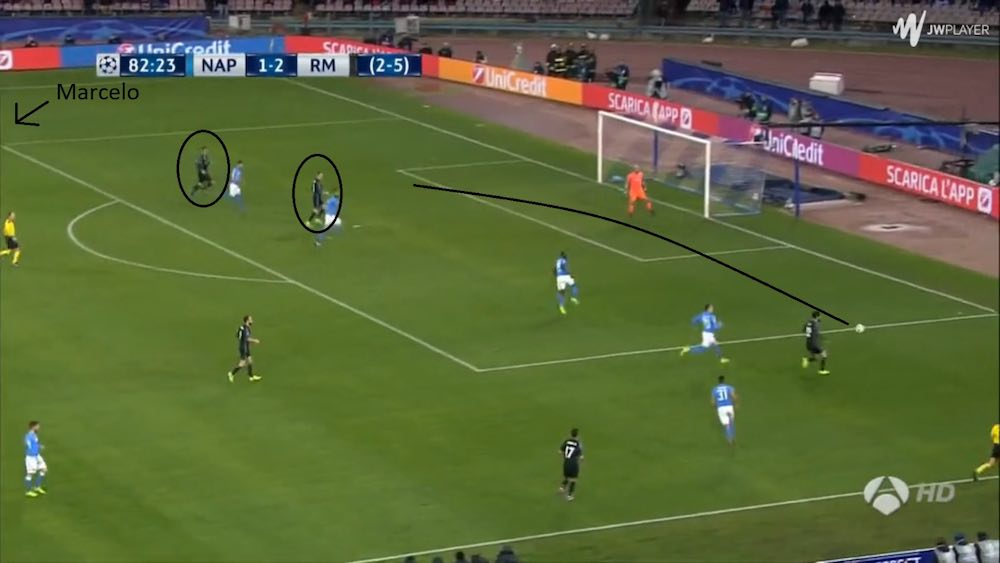
Midfield Importance
Madrid had the same midfield of Casemiro, Toni Kroos and Luka Modric throughout all three winning years. It contained a great balance between creativity and defensive stability, with Kroos the orchestrator of most attacks (circled below).
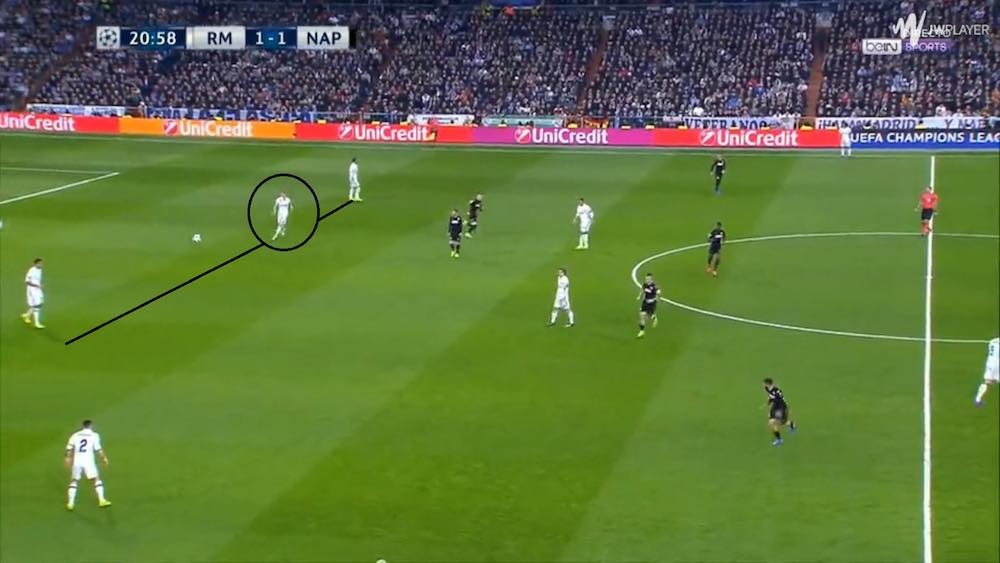
This is how Real Madrid usually build their attacks, and although Casimiro is the designated defensive-midfielder, Kroos will often be the deepest.
In this case, he is in line with the centre backs. This is so he can pick the ball up from them ready to start the attack. It is crucial for Kroos to be the ball progressor, due to his passing ability.
The German midfielder averaged a 94% pass accuracy across the three Champions League winning campaigns, and attempted an average of 6.43 long balls per game.
When comparing this to someone known for their excellent long passing, such as Paul Pogba’s who attempted 5.2 long balls per game in the Champions League 2018/19, Kroos’ passing range and accuracy is extremely impressive.
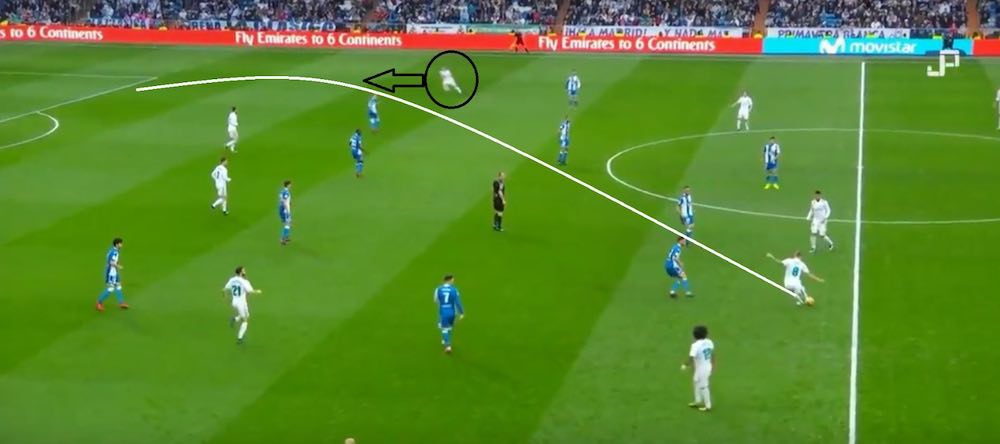
Kroos regularly launched attacks from deep, as shown above. If a team kept their side behind the ball in an attempt to frustrate Real Madrid, Kroos would be able to pick out passes like the one above to unlock a defence.
Although Kroos was vital to the build-up of the team, the importance of fellow midfielders Modric and Casemiro cannot be underestimated.
Throughout the three Champions League campaigns, Casemiro had been vital to Real Madrid’s success.
With the fullbacks attacking nature, Casemiro ensured that the opposition could not counter-attack. He broke up play before offloading the ball to his side’s attackers.
Casemiro had an average of 4.3 tackles per game and 2.36 interceptions per game through the three Champions League campaigns — evidence of the defensive midfield role he played in the side.
It was a role of major importance for Real Madrid, and across the three Champions League winning years, the side from the Spanish capital only lost two games when Casemiro played a full 90 minutes.
Alongside him, Modric’s creativity and ability on the ball helped Madrid progress. In the three triumphant campaigns, the Croatian averaged 1.16 key passes and 1.6 dribbles per game.
To put this in perspective, another brilliant midfielder, David Silva, averaged 2.1 key passes and 0.8 dribbles per game in the Champions League. Modric managed to keep his key passes above one per game, even though the progression of the team was primarily through the wide areas.
Dribbling was his main asset, and he is able to use it to help his side beat an opposition press and then feed the attack. He also manipulated the ball in order to create space.
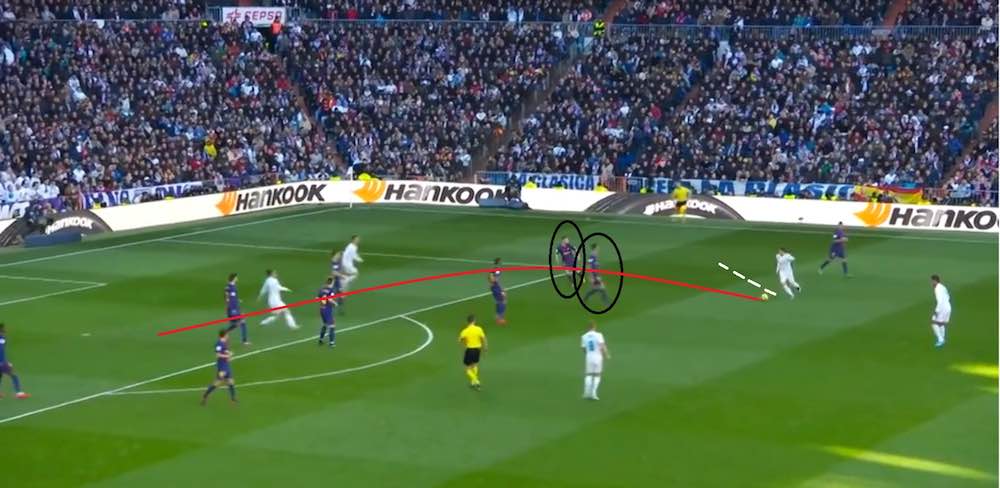
Above is a clear example of how Modric creates space with his close control. He makes it seem like he will cross the ball with the outside of his right foot, so both highlighted players move to their right towards the box.
Instead, Modric continues dribbling down the right flank and then plays an even more dangerous cross.
The midfield three all have clear roles in the system, but all possess great technical ability and can adapt to different situations, which is why Modric sometimes creates from deep and Casemiro can sometimes find himself in the final third.
Full-backs
Carvajal and Marcelo both played vital roles in the success of this side. The pair have 20 goal contributions between them from those three recent Champions League wins, but the importance of their role stretches beyond goals and assists.
Because they are both dangers in the attacking third, their presence naturally opens on space for players like Isco, Bale and Ronaldo to exploit.
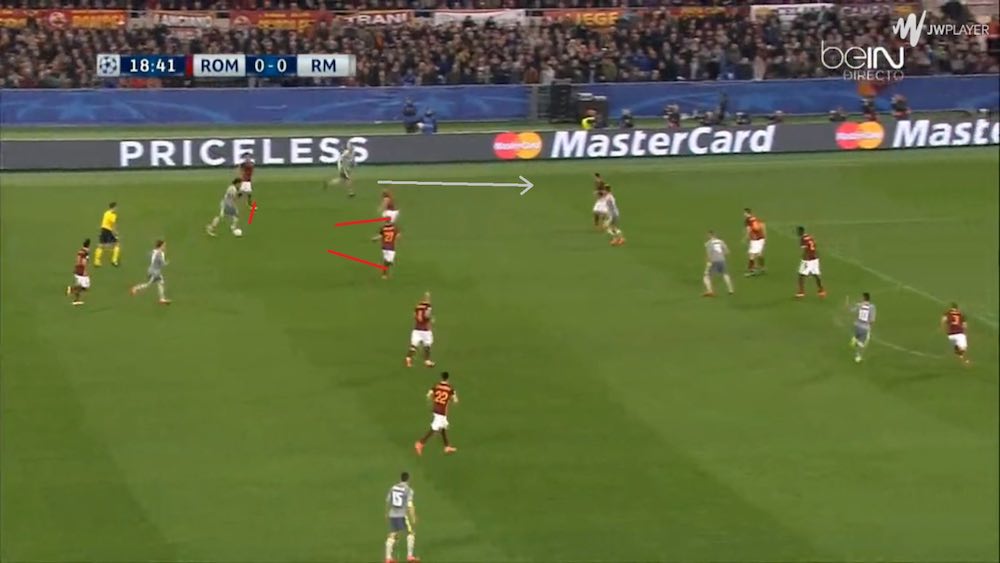
The image above is a prime example. Three Roma players are aware of the threat Marcelo possesses, which allows Ronaldo (white arrow) to move into space down the left.
When Marcelo releases the ball, Ronaldo has a free run at the right back.
Cristiano Ronaldo
It does help a team when they have one of the two best players on the planet, which Real had in the shape of Ronaldo.
The forward has been clinical and a clutch player in many Champions League games through the three years. With 43 goals in the three Champions League campaigns, it is clear that Ronaldo was on a different level.
But, perhaps most impressively, 21 of these goals came in the knock-out stages of the competition. Showing the importance of Ronaldo’s place in the team and his ability to step up in big matches.
It is almost certain that if Ronaldo was not playing, Madrid would not have achieved what they did in Europe.
Conclusion
What Real Madrid were able to achieve in the Champions League is not likely to be repeated for many years, yet the tactics behind the success were not especially complicated.
While Zidane relied on world-class players such as Ronaldo and Kroos, the team were set up to maximise the influence these players had on the pitch.
They executed this plan by using full-backs to create space for the attackers, and by giving Kroos creative freedom in the middle.
These world-class, luxury players could not win on their own, and needed players such as Carvajal and Casemiro to balance the side and create a unique winning formula.

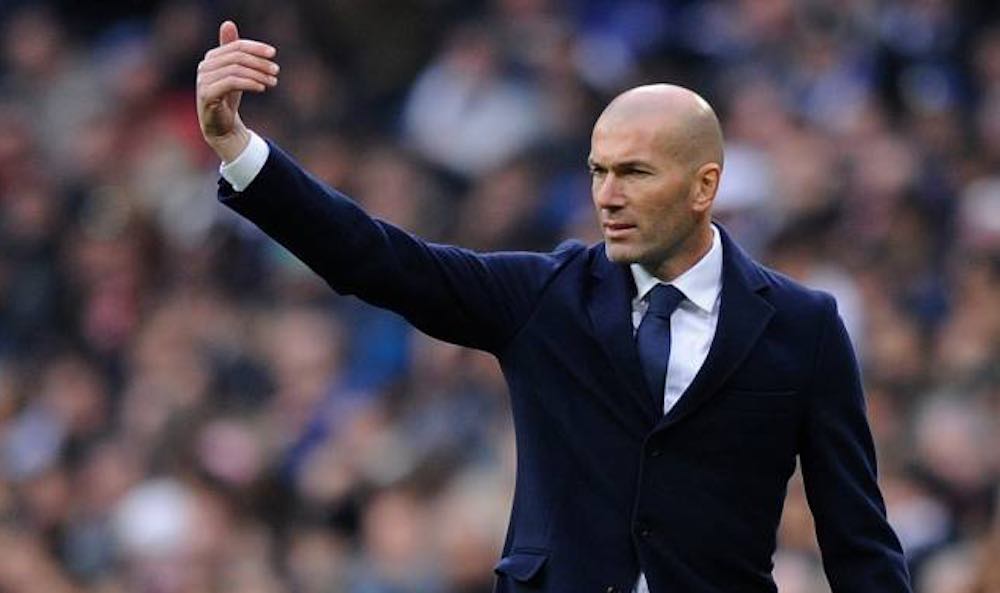
COMMENTS
Thank you so much for analyanalysis.
Good coach with wisdom of Solomon in food ball history.Hala Madridistar
The most effective tactics ever. Thank you for sharing with us.